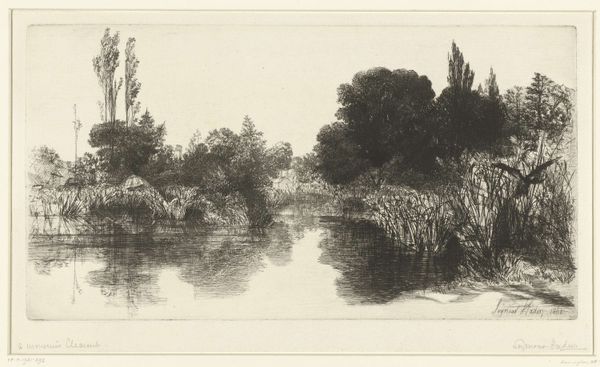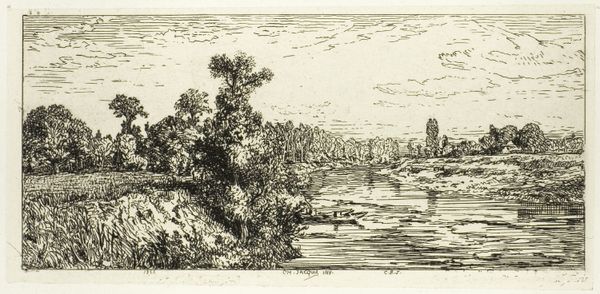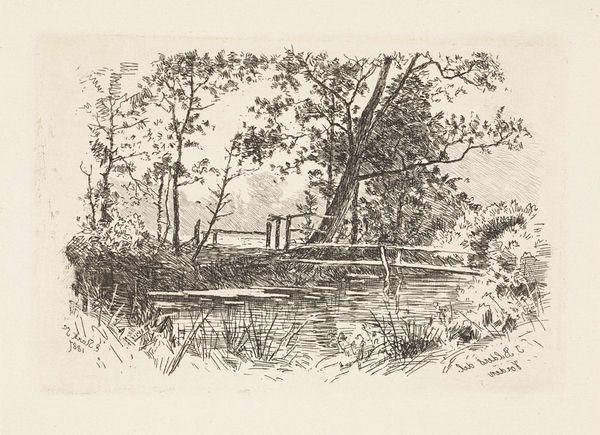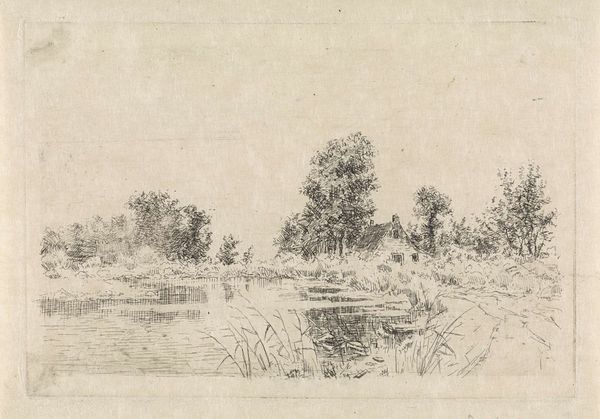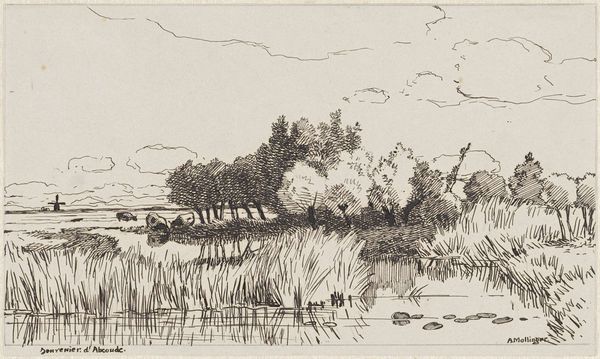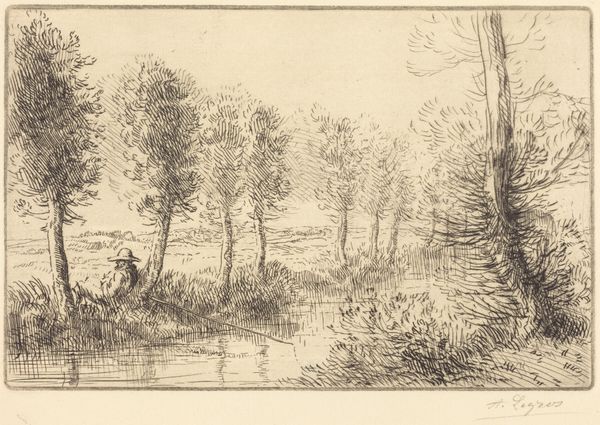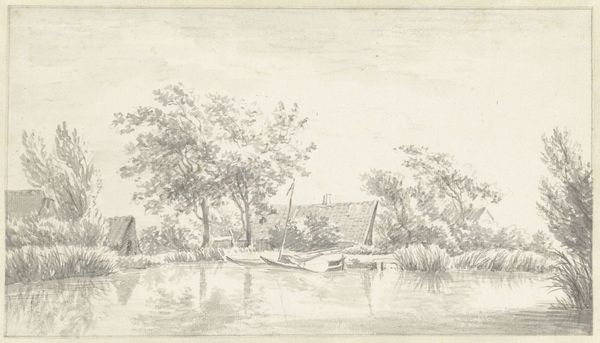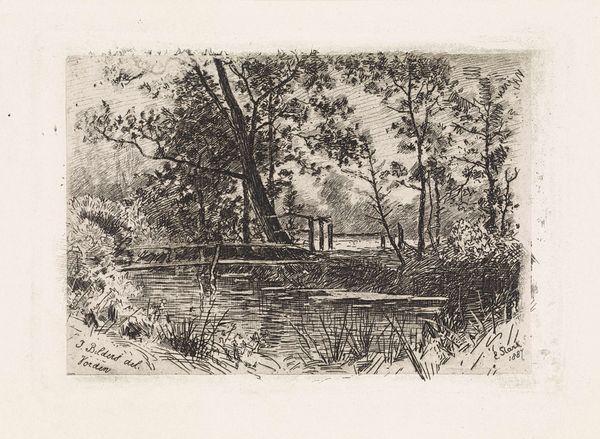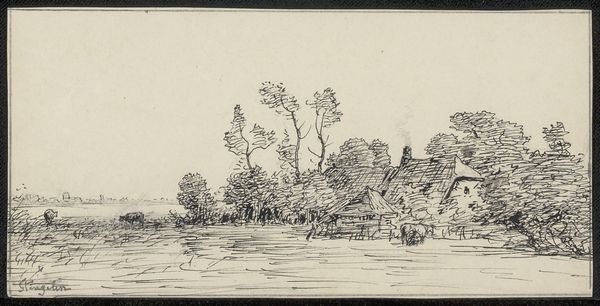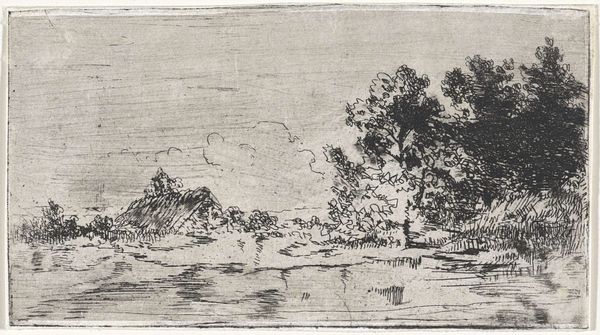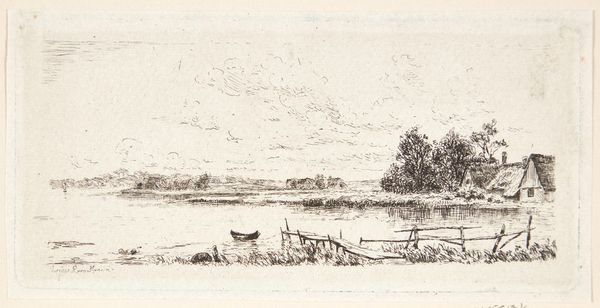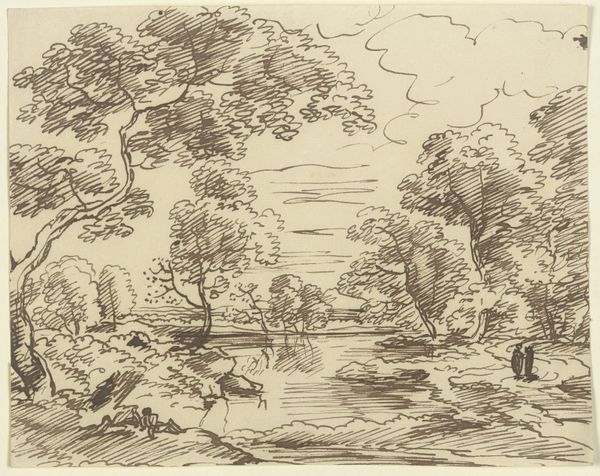
Dimensions: height 152 mm, width 255 mm
Copyright: Rijks Museum: Open Domain
Curator: The linear quality is really striking here. Notice how Alexander Mollinger uses line weight and density to describe light and shadow. Editor: Yes, it feels remarkably still, doesn't it? Almost hushed. But who was experiencing that quiet, and in what way, becomes the crucial question, especially for depictions of the natural world like this “River Landscape near Maarseveen”, placing us somewhere between 1846 and 1867. Curator: He definitely emphasizes structure with those parallel pen strokes. It’s particularly noticeable in the rendering of the trees; their forms defined by the rhythm of lines. What does it tell us about how Mollinger perceived or wanted to present the landscape itself? Editor: Well, think about the Netherlands during this period: a rapidly changing socio-economic environment. Landscape paintings provided a visual means of connecting with a mythologized vision of national identity rooted in an agricultural past and a deeply ambivalent response to processes of urbanization, commodification, industrialization, and land exploitation. These bucolic settings were already becoming places of recreation rather than labor, representing an idealized national history for those with the leisure to pursue such sentimentality. Curator: I understand your point but even beyond these historical and cultural implications, there is a certain timelessness to Mollinger’s line work. The formal qualities contribute to its quiet, persistent mood and enduring appeal. The use of light, as I mentioned previously, emphasizes line to evoke the serenity of the landscape, that you have mentioned before, regardless of any background of this period. The sky and water read similarly too. Editor: Yes, and it’s within that tension—between the formal mastery and the societal anxieties mirrored by this art—that this work generates such nuanced meanings, revealing both artistry and deeper social context. Curator: True. It certainly asks us to reflect both on the power of skillful drawing and on what we bring to the landscape as viewers, across time. Editor: Indeed, viewing "River Landscape near Maarseveen" has given me food for thought regarding the intricate layers of meaning inherent within supposedly 'simple' landscapes. It emphasizes, above all, how critical it is for us to continue interrogating art in its historical context, allowing a more thorough comprehension.
Comments
No comments
Be the first to comment and join the conversation on the ultimate creative platform.
